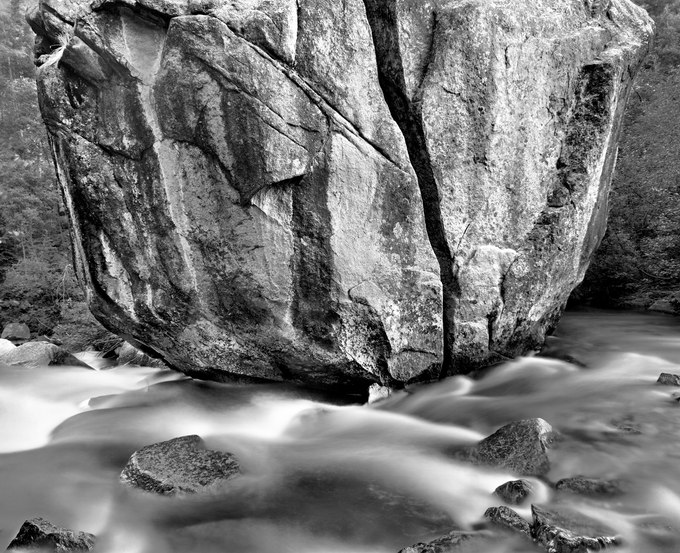A 1.7-billion-year-old boulder rests, precariously balanced in the streambed of central Colorado's Roaring Fork River. It is composed of oceanic sediment mixed with molten lava that metamorphosed into granite several miles underground through eons of heat and pressure. After one billion years of uplifting and erosion, the rise of the Rocky Mountains surrounding the Roaring Fork River unearthed this ancient layer of granite.
The deeply carved canyon within which this boulder is cradled has acted as a thoroughfare for glaciers and, more recently, melting snow cascading down from the continental divide. It has also served as a ravine for receiving tumbling rocks that have fallen off the slopes of the steep-faced valley surrounding this stone-cluttered river channel.
After tearing down the mountainside, this boulder neatly cracked in half when it came to a crashing halt. Surging full and muddy during spring runoff and running clear and slow the rest of the year, the river's current courses around and under the boulder, polishing river stones. Along its banks, forests of willows, spruce, and aspen give way upstream to grassy meadows above the tree line.
The riverbank from which I made this photograph was a late 19th-century mule train route, bringing in prospective miners and hauling out gold and silver ore over the 12,000-foot Independence Pass. The four-wheel-drive road—and newer passenger car road across the river—overlay Ute hunting paths going back at least 10,000 years.
Location research and commentary by James Baker.

